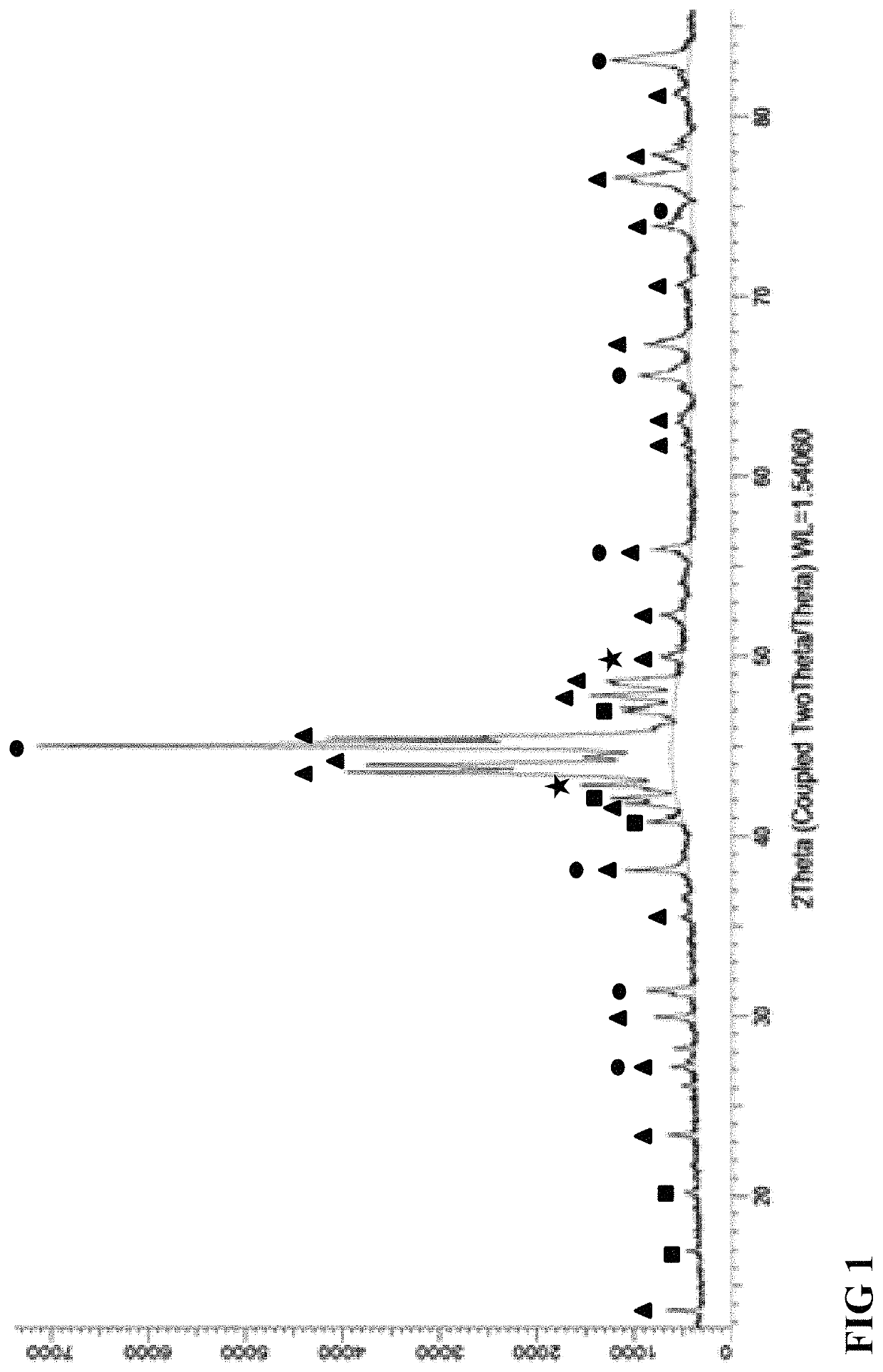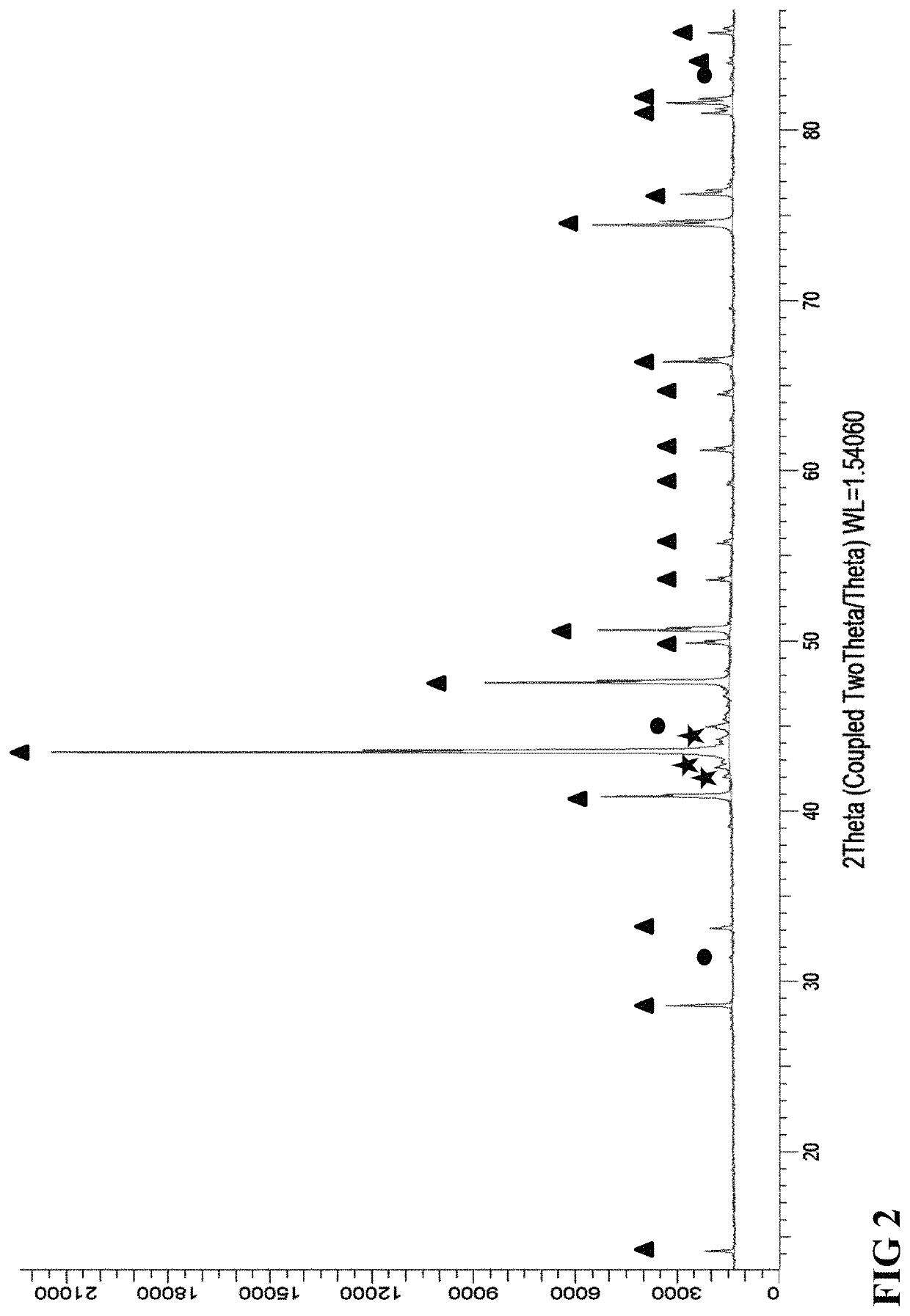Method of manufacturing a crystalline aluminum-iron-silicon alloy
a technology of iron aluminide and manufacturing method, which is applied in the field of manufacturing method of crystalline aluminumironsilicon alloy, can solve the problems of reduced density of iron aluminide, reduced ductility of iron aluminide,
- Summary
- Abstract
- Description
- Claims
- Application Information
AI Technical Summary
Benefits of technology
Problems solved by technology
Method used
Image
Examples
examples
[0029]Aluminum, iron, and silicon raw materials were combined to form a 400 g melt comprising 35% aluminum, 53% iron, and 12% silicon. The raw materials were melted at 1200° C. for 5 minutes to form a cylindrical composite ingot approximately 3.8 cm in diameter and 7.7 cm in height. X-ray diffraction (XRD) was performed on the resulting composite ingot using a D8-Advance Davinci diffractometer in a Bragg Brentano configuration using copper Kα radiation. Data was collected from 10°-90° 2θ using a 0.02° step size and an integration time of 1 sec / step. Rietveld refinement was performed using DIFFRAC. SUITE TOPAS software. FIG. 1 illustrates an XRD pattern of the as-prepared composite ingot. The XRD pattern of the as-prepared composite ingot indicates a composition of about 72% Fe1.7Al4Si hexagonal (P63 / mmc) crystalline phase (indicated by triangles in FIG. 1), about 23% Fe3Al0.25Si0.75 cubic (Fm-3m) crystalline phase (indicated by circles in FIG. 1), about 5% Fe3Al Cubic (Pm-3m) crysta...
PUM
| Property | Measurement | Unit |
|---|---|---|
| temperature | aaaaa | aaaaa |
| temperature | aaaaa | aaaaa |
| pressures | aaaaa | aaaaa |
Abstract
Description
Claims
Application Information
 Login to View More
Login to View More - R&D
- Intellectual Property
- Life Sciences
- Materials
- Tech Scout
- Unparalleled Data Quality
- Higher Quality Content
- 60% Fewer Hallucinations
Browse by: Latest US Patents, China's latest patents, Technical Efficacy Thesaurus, Application Domain, Technology Topic, Popular Technical Reports.
© 2025 PatSnap. All rights reserved.Legal|Privacy policy|Modern Slavery Act Transparency Statement|Sitemap|About US| Contact US: help@patsnap.com


